B2B Content Strategy
10 mins read
Gated vs Ungated Content: What’s the Verdict for B2B Marketers in 2023?
Are you a B2B marketer torn between gated vs ungated content as a demand generation tactic? You'll find out the best option for you to pick in 2023 and beyond.
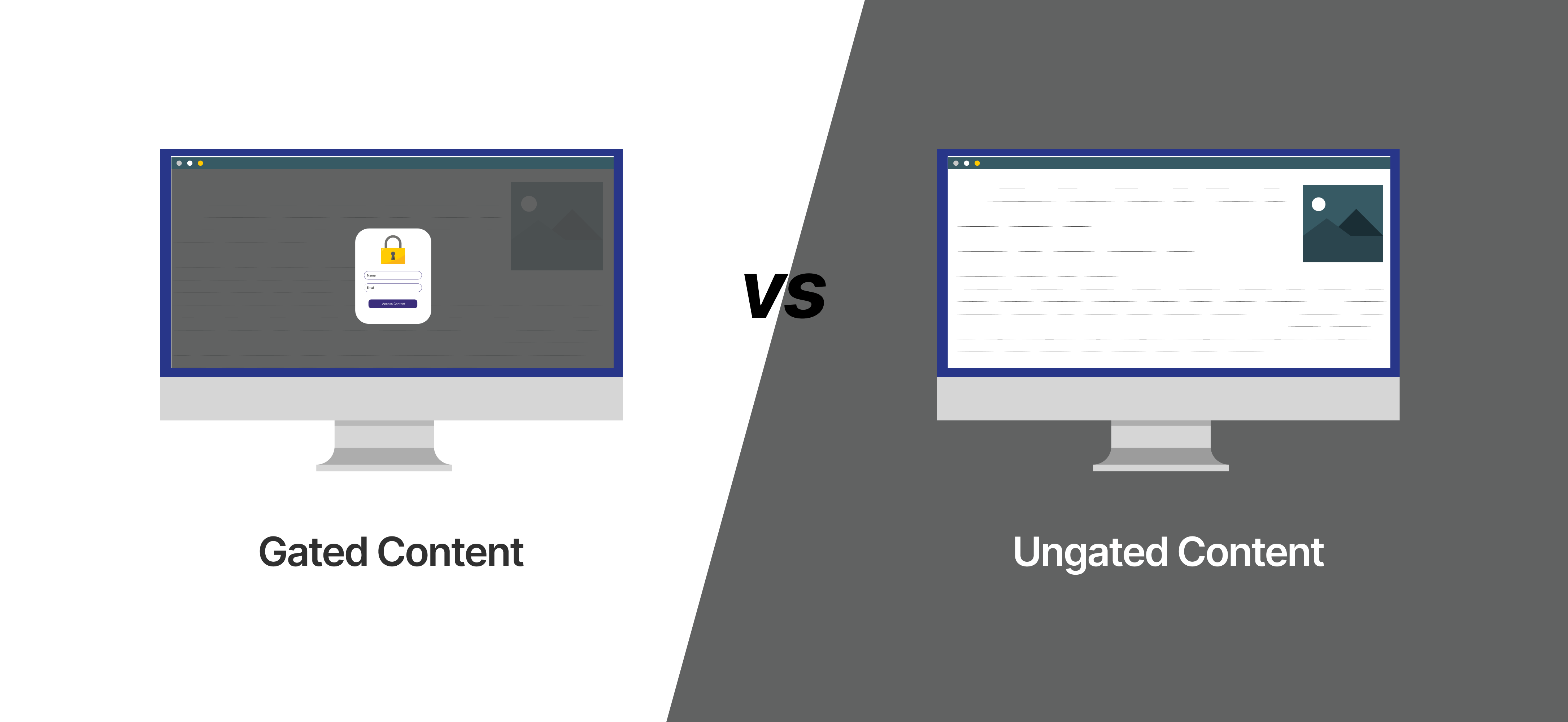

Tamilore Sonaike
Gary Vaynerchuk, Chairman of VaynerX and CEO of VaynerMedia once said:
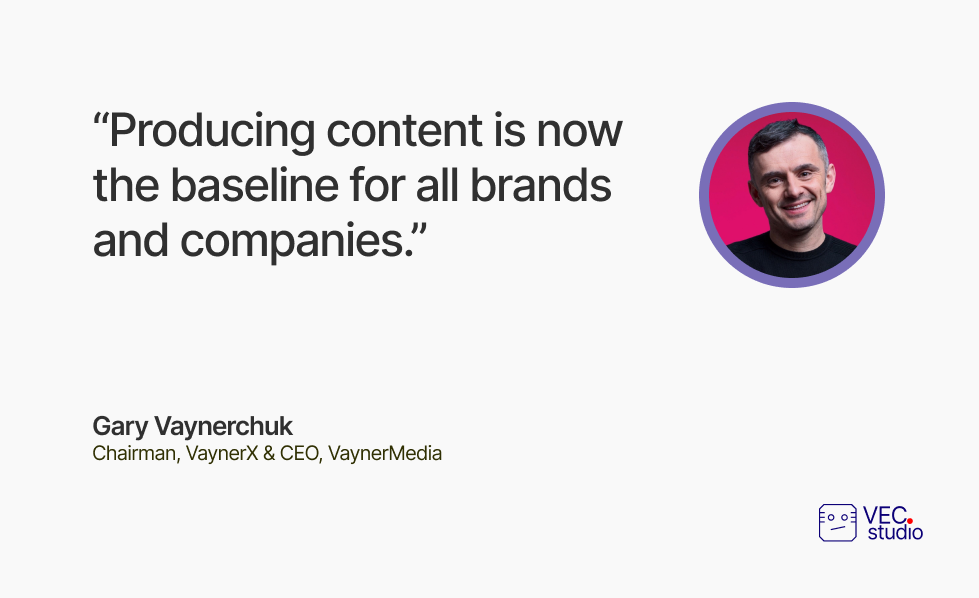
Here’s what Gary meant:
As a B2B marketer in today’s digital-first world, you must embrace content creation and marketing. But taking and going all-in on Gary’s advice (like I assume you’re doing) means you’ll inevitably face the dilemma of:
Should I gate or ungate the content my team and I create?
Ten-fifteen years ago, this wasn’t a dilemma.
Easily, the answer would have been to gate your content.
It’s a different story today. With Sturgeon’s Law still holding, everything has changed. I’ll come to Sturgeon’s Law in a bit.
For now, the question is…
In 2023 and beyond, is content gating still worth it?
I’ll answer the gated vs ungated content debate today. And if you’re a CMO or Marketing Manager, you should stick around to see the answer.
Why?
You’ll see a Product-Led Story-driven content marketing approach much more effective at helping you achieve your company’s demand gen and sales goals without gating any content.
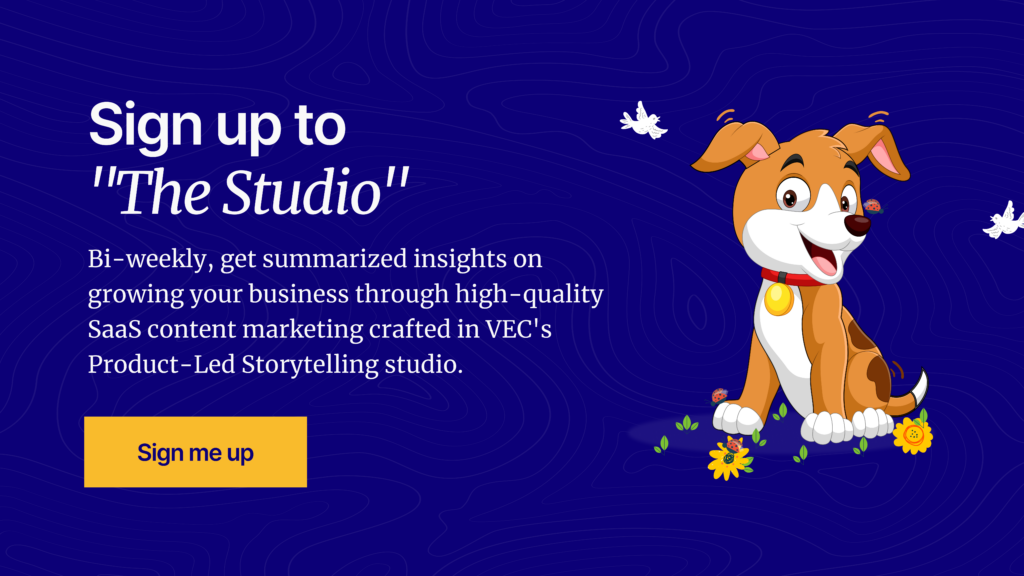
Sturgeon’s Law & the Fall of Gating B2B Content
In the beginning, only valuable content was gated.
As time went on, the obsession with vanity metrics took over. Marketers started gating most of the content they created. But because Sturgeon’s law holds, doing so led to the collapse of the content-gating tactic.
First, what’s Sturgeon’s Law?
Sturgeon’s law is an adage coined by Theodore Sturgeon, an American Sci-Fi Author and Critic. The law states…
“Ninety percent of everything is crap.”
Looking at most content on the web today, this is nothing but the truth. Over 90% of content created and made available on the internet is a replica of other content and, therefore, not so valuable.
But B2B marketers neglected this law when they gated most, if not all of their content.
And why did they put the majority of their content behind a wall?
Because the ‘lead generation’ and ‘MQL generation’ craze took over. You see, someone sold B2B marketers the pipe dream that acquiring, measuring, and optimizing for leads/MQLs was an effective demand generation strategy.
So in a bid to generate more emails slapped with ‘lead’ tags, the craze of content gating intensified. There’s data to support this. According to a Statista report, 75% of content marketing efforts aim to generate leads.
These ‘supposed leads’ get passed on to the sales team as SQLs to close. More like perform magic.
At first, it worked.
People hadn’t caught up with this tactic, so they gladly exchanged their details for what they assumed was valuable content. And the MQL tactic boomed.
However, as more and more people realized most gated content wasn’t even worth their time, let alone valuable, they became wary.
And so today, everything has changed.
The Problem with Gating Content in 2023 and Beyond
Gating your content to generate MQLs is no longer an effective inbound marketing tactic. It won’t help you, a SaaS CMO or marketing manager, achieve your business goals.
Why do I say so?
When you tell people to surrender their email addresses in exchange for your piece of content, three things happen:
- They are convinced the information they’ll get is valuable and original, so they’ll input their main email addresses. Although nowadays, the number of people who even think so is pretty low. A LinkedIn survey reports that today, only
- Because they’re not so sure about the quality of your content, and if it’s worth giving up their details for, they sign up with bogus and worthless email addresses.
To make things worse for content gating, there are now tools providing temporary and disposable email addresses people can use to unlock content gates. Once supposed ‘leads’ access to your content, these email addresses disappear.
Some of these tools include Maildrop.cc, Mailinator, Mailsac, etc:

- They abandon your content altogether. They leave your website and go to your competitor’s site without looking back. I have to say, this option has been my go-to response numerous times.
Here’s a visual depicting this:
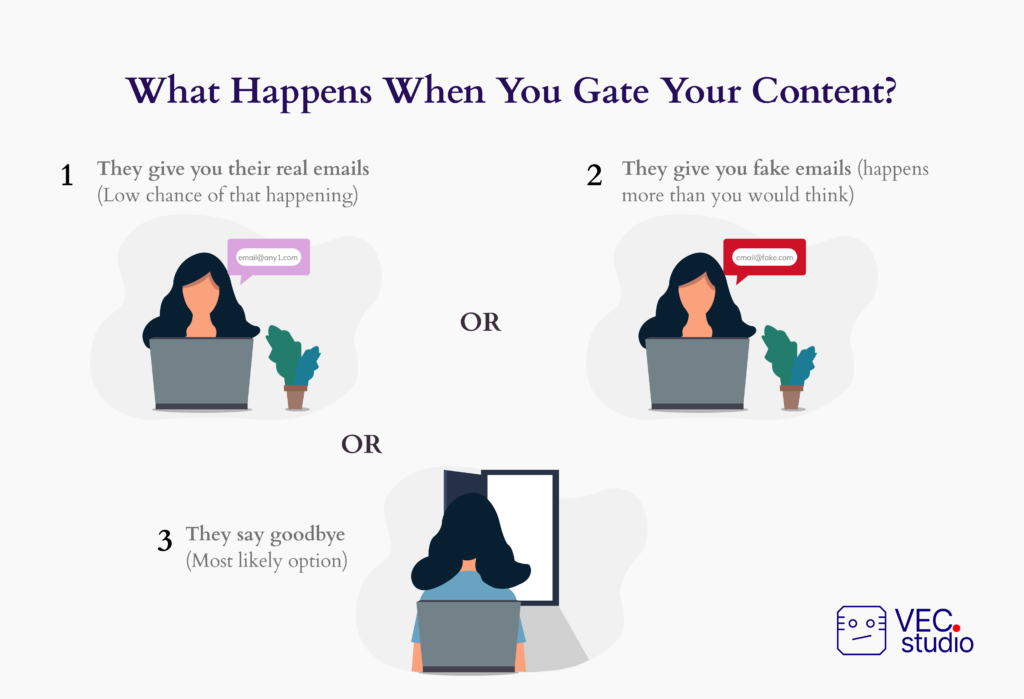
More people are following the second and third paths: Signing up with fake emails or dumping your content altogether.
See the proof in this infographic from a LinkedIn survey of B2B buying teams:
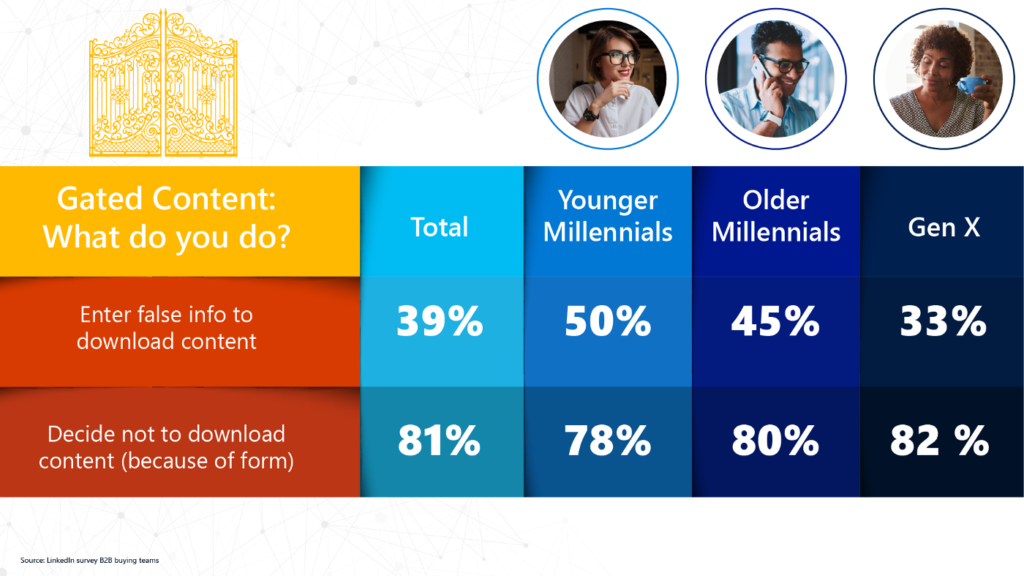
As you can see, 39% of people will use fake details to access a gated asset. And 81% will not download it at all.
These stats show the flaw in the ‘content gating tactic.’ And this means you must rethink it along with its aim of slapping forcefully-collected emails with MQL tags.
MQLs or leads are no longer what you should be targeting. They don’t mean much anymore in terms of driving demand and sales-qualified opportunities.
Kate Adams, Former VP of Marketing at Drift changed the entire marketing funnel of Drift and declared:

Why?
Two good reasons.
First, it is a long and tiring process trying to convert MQLs to customers. That type of funnel is slow and no longer effective as the MQLs or SQLs lose interest. You need a SaaS funnel that converts in days, not months.
Second, slapping MQL tags won’t drive demand or customer acquisition. Kyle Lacy, Seismic’s SVP of Marketing, noted this in an interview with Better Product.
He said:
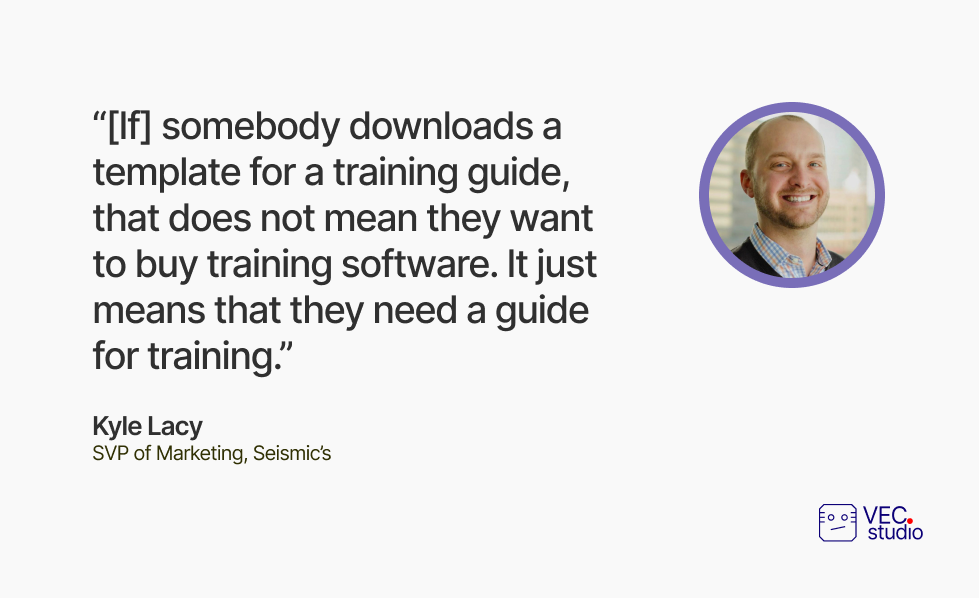
The reasons above show gating your content and prioritizing MQLs is not smart. It’s why Chris Walker, CEO of Refine Labs, made this post on LinkedIn:
Jason Vena, Marketing Director of Fusion Tech Integrated, agreed with Chris on gating content for amassing MQLs.
See his comment:
Now MQLs are off the table (since they do little to drive sales). What marketing metric should you target?
Do this Instead: Target Product Qualified Leads (PQLs)
Product Qualified Leads are MQLs on steroids.
A PQL is more likely to become a SaaS customer than leads or MQLs. Below, I’ve explained more about PQLs to clear up your confusion.
What are PQLs?
Let’s look at how Hubspot defined the concept.
Hubspot wrote:
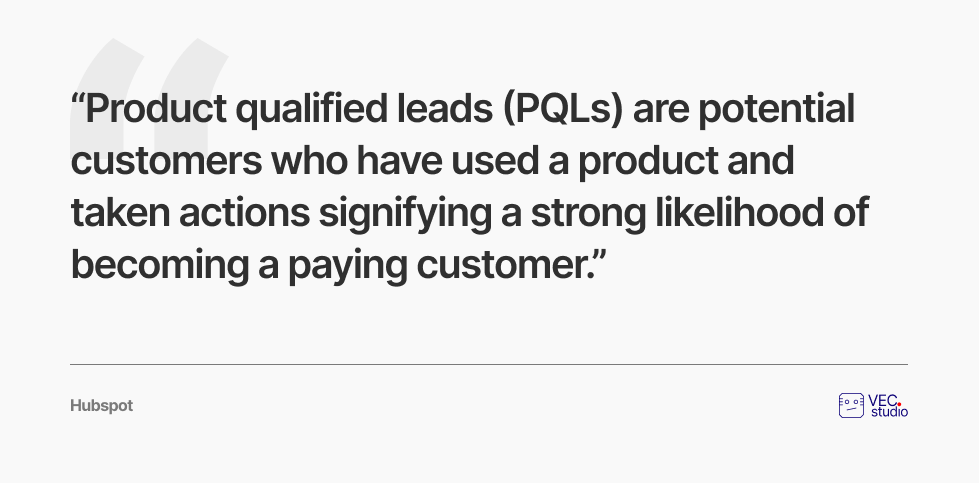
This definition states one thing clearly.
PQLs must have used your product at a point. And because they have experienced your product, they are more likely to buy it:
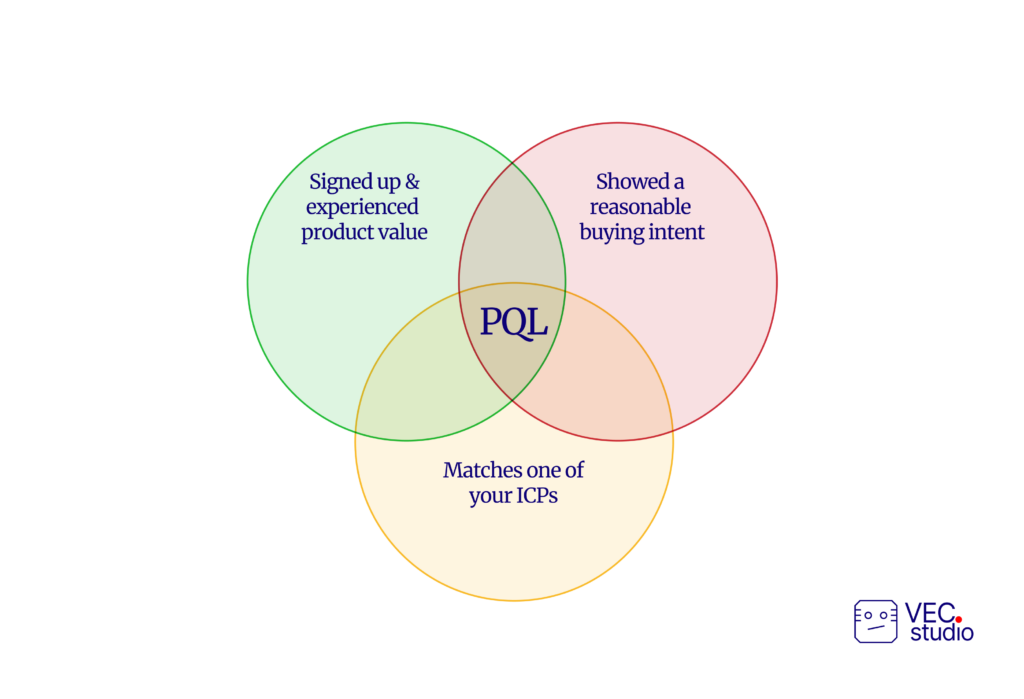
A 2021 TrustRadius report showed 41% of B2B Tech buyers made purchasing decisions after using a free trial, and 58% after a demo of the product. In other words, 41% of PQLs paid for B2B SaaS products in 2021.
Furthermore, the study found B2B buyers trusted experiencing the product more when making a buying decision:
Therefore, generating PQLs should be your primary focus as a SaaS marketer.
On why PQLs are better than MQLs for B2B SaaS businesses, Dan Benger, Entrepreneur, Investor, and Product-Led Growth Enthusiast remarked:
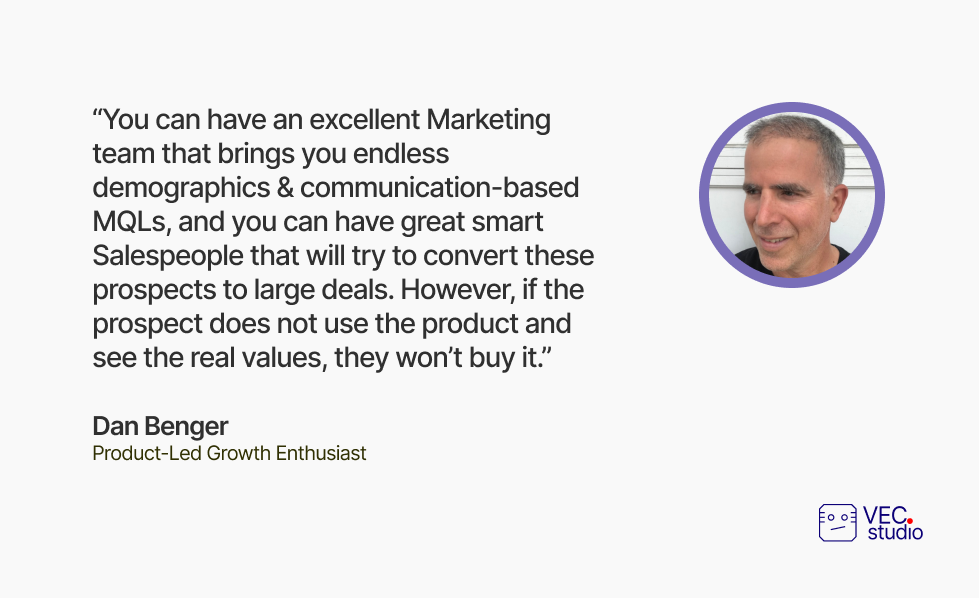
He went on further to say:
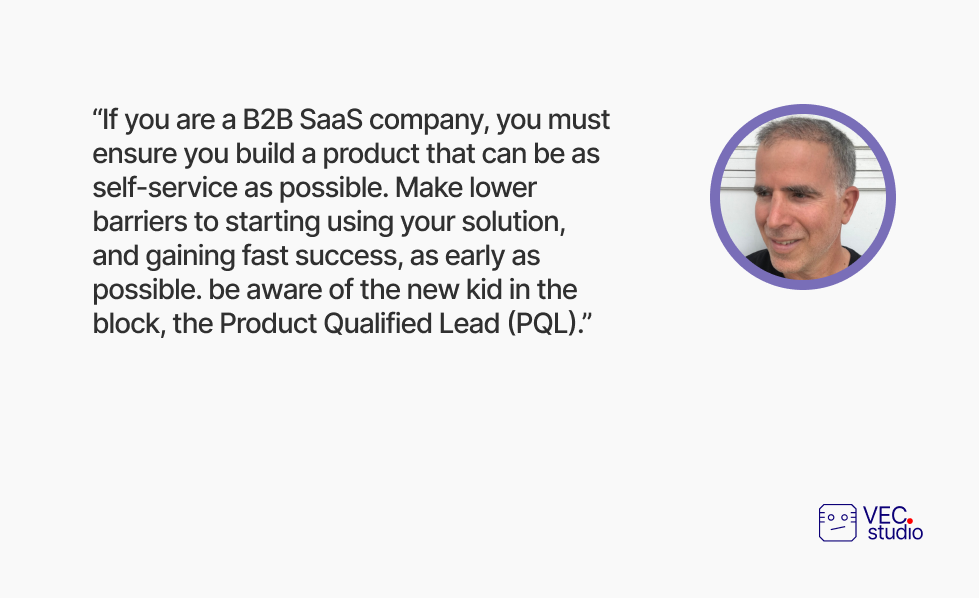
In other words, instead of worrying so much about MQLs, target PQLs. And the good news is: you can acquire PQLs directly from your content, which is why you should leave it ungated. More on this soon.
So far, I’ve established three things:
1. Ungate your content. Doing so is good for business.
Michael Roberts, Head of Marketing Automation at CloudApp, was clear about this:
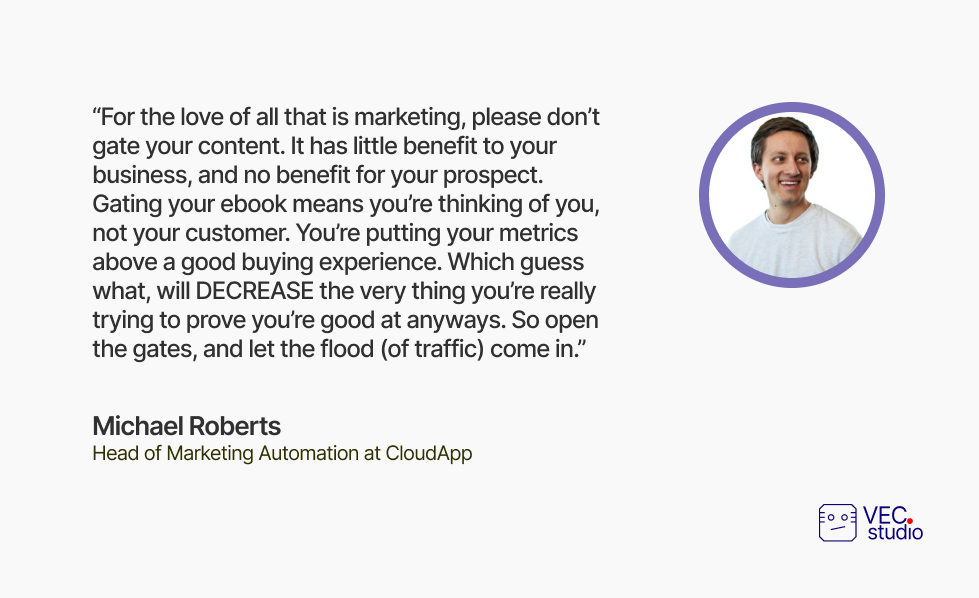
Also, Impact, a B2B Sales and Marketing Agency shared some pretty interesting results from when they ungated their content. Their pillar pages have driven over 25,000 website sessions and over 900 new contacts for the company. And they have also influenced more than $550,000 in revenue.
Other things I’ve hammered on are:
2. Ditch MQLs. Seriously, ditch them.
3. Embrace PQLs. Attract them by all means possible by adjusting your B2B marketing strategy.
Again, a great way to attract PQLs is through the content you create and publish.
Let me explain better.
After ungating content, you must step up your content game. You must craft (and not just create) content so readers can experience your product’s value as they consume it. Do this well enough, and you can inspire them to sign up for a free trial of your product (thus directly becoming a PQL).
That’s something our clients get from the pieces we craft for them:
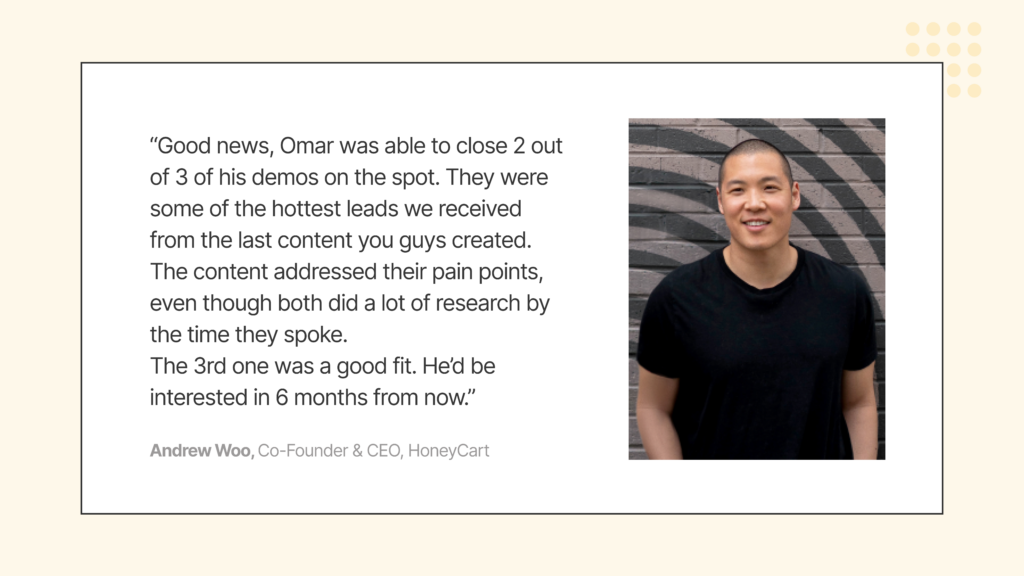
But not any kind of content is capable of turning readers into PQLs. The blog post must be engaging, valuable and solve a crucial pain point for the reader as they consume it. More importantly, you must tie everything up with relatable storytelling.
How do you create such content?
That’s where the Product-Led Storytelling Formula comes in.
Product-led Storytelling involves crafting B2B content or SaaS copywriting with relatable stories, showing how your SaaS product solves your target audience’s problems and pain points.
This unique B2B content marketing approach transforms regular pieces into conversion-focused drafts:
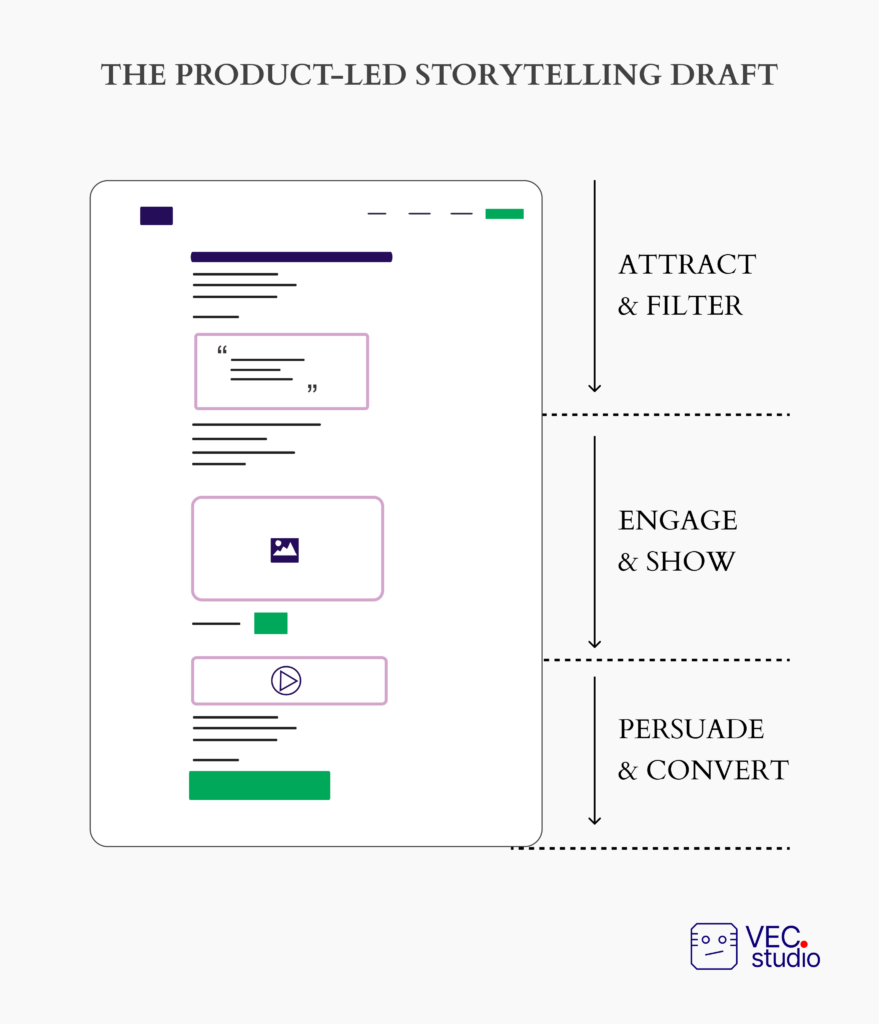
How Do Product-Led Stories Attract & Convert PQLs?
Coined by Victor Eduoh, VEC’s Lead Strategist, the Product-Led Storytelling formula is an effective way to get customers directly from your content.
How does it do this?
Everyone loves a good story, and the PLS content formula takes full advantage. So the formula involves creating content using your customer success stories (or case studies) and user generated content to show your reader how your product solved others’ problems. The study by TrustRadius cited earlier also revealed 64% of B2B Tech Buyers rely on customer stories and case studies the most:
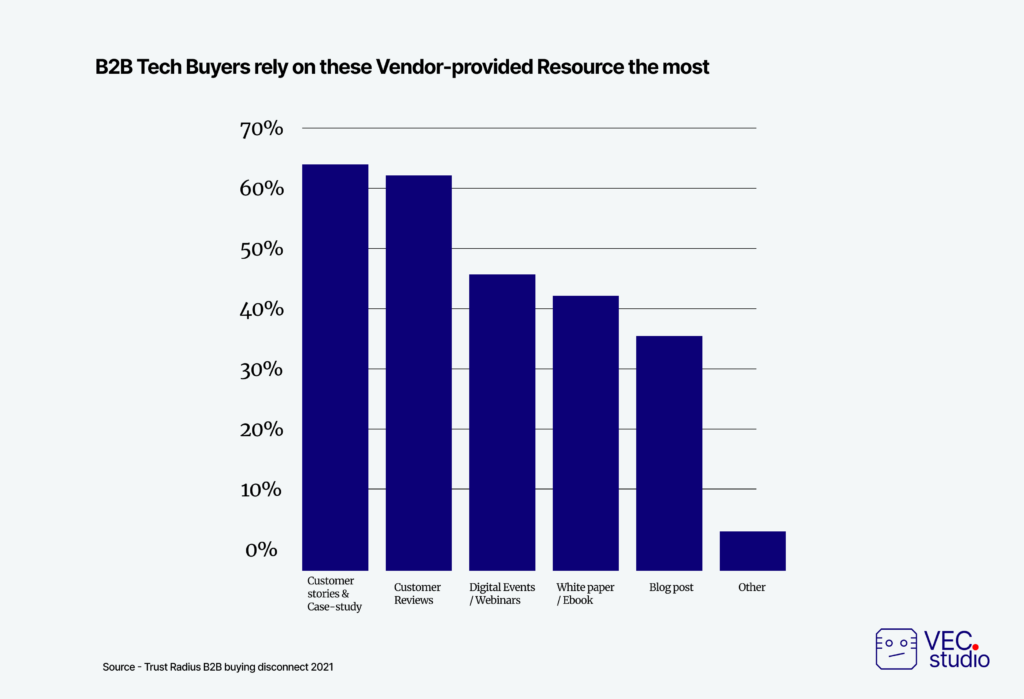
This data emphasizes the need to infuse customer stories and case studies into your ungated content pieces, which is exactly what a PLS content does.
A PLS blog post is broken down into 9 steps to create SaaS content that directly converts PQLs.
Here’s how it goes:
- Craft benefits-driven stories that promise to solve a problem for them. In other words, prospects should see value in your title.
- Get the context straight right off the bat. Your content mustn’t appeal to everyone. It should target defined ICPs who’ll get the most value from your product-led story.
- Show (and not tell) them your product can solve the problem addressed in the article, which gets keen on exploring your content.
- Make your content entertaining and engaging by infusing your PoV, quotes, stats, etc. Walk prospects through how to solve the problems your article addresses in real-time using relevant stories.
- Insert reviews and contextual CTAs, inviting those who consume your content up to this point to start solving their problems with your tool.
- Add more entertaining stories, as necessary. But, make sure you continue to insert snapshots of your tool in action.
- Use a more-detailed testimonial (with a reasonable outcome) to show that people similar to the ICPs your content targets have used your tool to achieve results.
- Switch on your SaaS copywriting skills and persuade those who engaged your content to this concluding part. Get them to imagine how their lives will be better if they signed up and started using your tool to solve the problems your product-led story walked them through.
- Don’t ask them to become a lead, download an ebook, or use a pop-up to disrupt them. Use a prominent CTA box, sweet copy, and button and ask them to trial/demo your product.
These 9 steps are further grouped into three crucial sections: Attract & Filter, Engage & Show, and Persuade & Convert.
These three sections, in turn, transform each content piece into a high-converting SaaS sales funnel of its own, irrespective of your distribution channel:
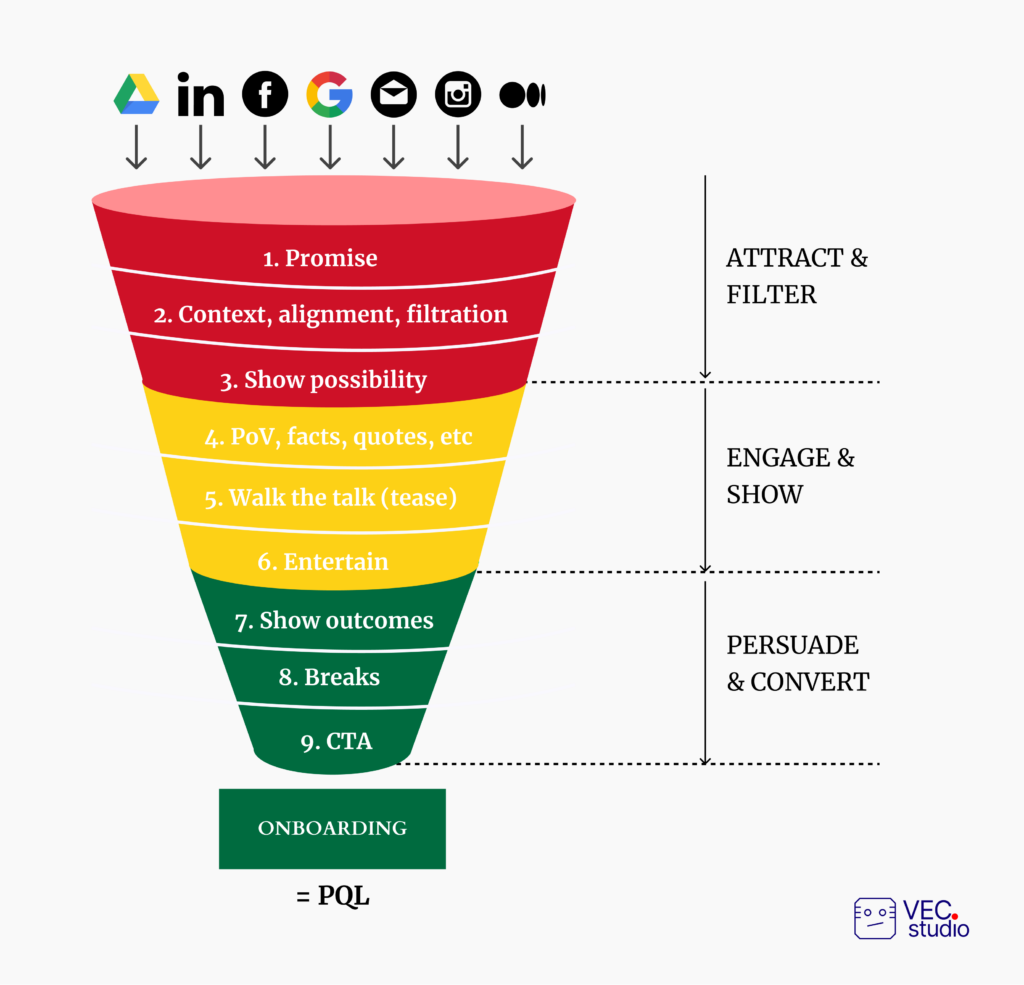
In the end, you gain PQLs (without gating your content).
This approach is a much better way to generate demand for your SaaS product than gating your content in hopes of generating MQLs wouldn’t you agree?

Does This Mean You Should NEVER Gate Content?
I’ve shown you why gating content doesn’t benefit your business or customers. But you might be wondering: Does this mean I should never gate content again?No, not exactly.
You have to understand when I say you shouldn’t gate content again, it isn’t a hard and fast rule.
A major reason why content gating no longer works is that the content is usually not revolutionary. And the information is something the reader can find elsewhere.
But, if the information in your content is original, unique, and really valuable e.g., white papers, then you can gate it. Anu Ramani, Founder and Managing Director of Isoline Communications said:
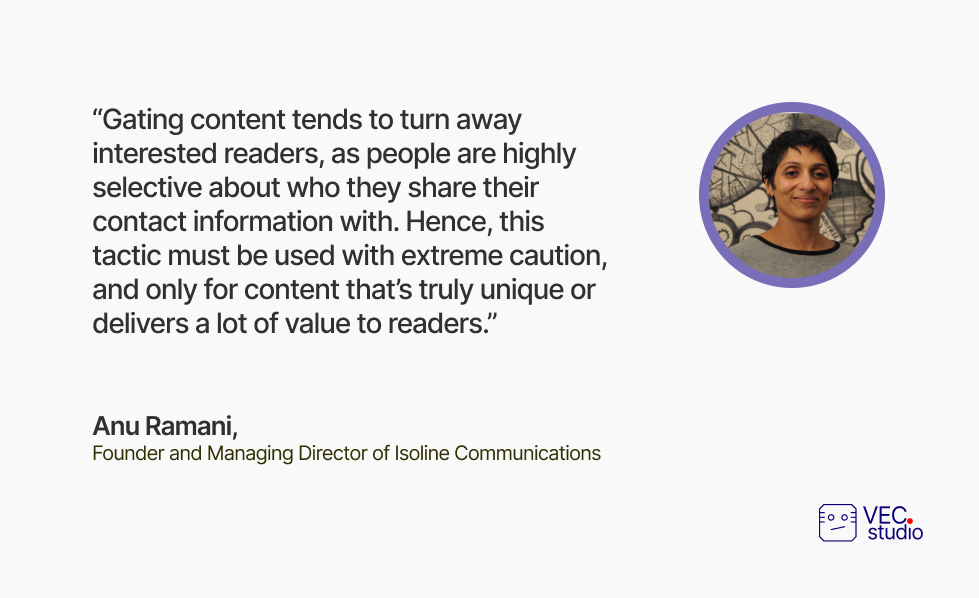
Rephrased, if your content is generic with only a little spin, it’s best to leave it ungated.
Now, if you do gate your valuable content, you must collect the necessary info for personalizing your follow-up. Don’t just collect emails without context and blast everyone with fluffy messages.
Like Victor Eduoh, our Lead Strategist posted,
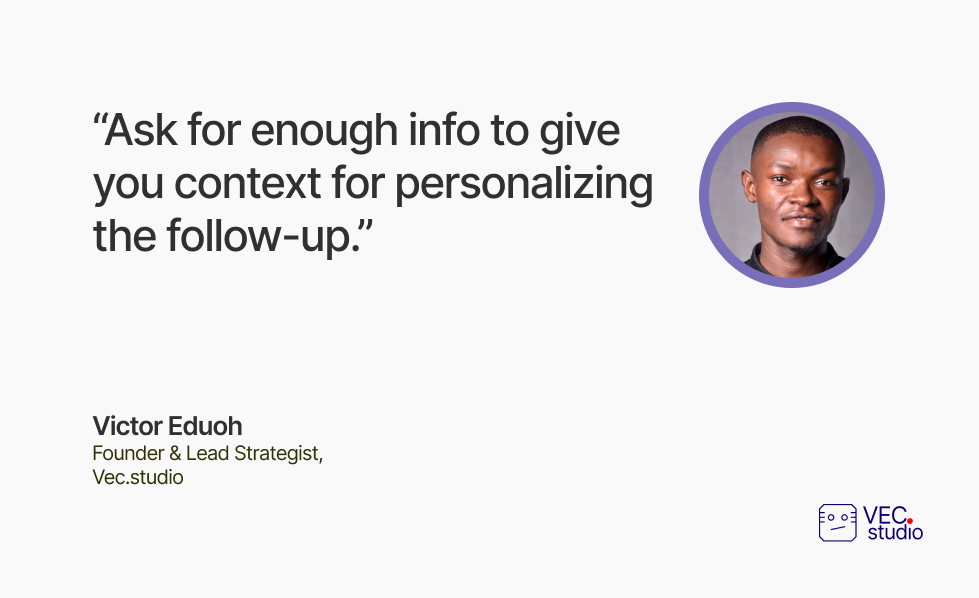
Ditch Gating B2B Content. Embrace Un-Gating PLS Content
2023 is upon us.
The internet is more competitive than ever.
Over 7 billion blog posts are published per day.
At the current insane volume, why would you lower your company’s chances of success by putting a lock on your content? If you do, your target audience will simply look elsewhere for the information they need.
If your aim is to amass worthless leads which don’t translate to customers, then, by all means, gate away. But if you want to see ROI from your content strategy and marketing efforts, don’t focus on amassing ‘leads’ or even MQLs.
Focus on PQLs.
Use the Product-Led Storytelling Formula to create SaaS content that generates PQLs more likely to become customers. If you do this, you’ll give your SaaS company a competitive advantage.

Tamilore Sonaike
As an introvert, the way I express myself is through my written words. I continually hone this skill through constant learning and practice so that you can find great value in what I write.
Rare insights, in your inbox
How do SaaS Founders and B2B Content Leaders build brand and drive growth through story-driven content execution? Dig that, plus rare Product-Led Storytelling insights, in this bi-weekly newsletter.
Get a copy of our Story-driven, Content Quality Checklist –FOR FREE– once you subscribe.

